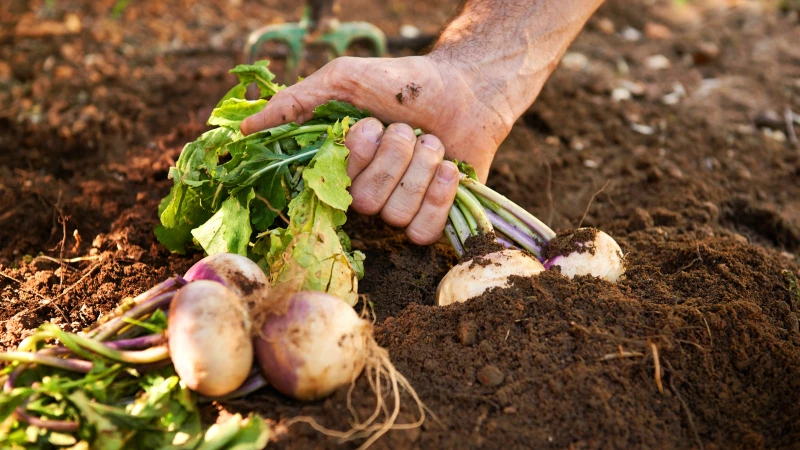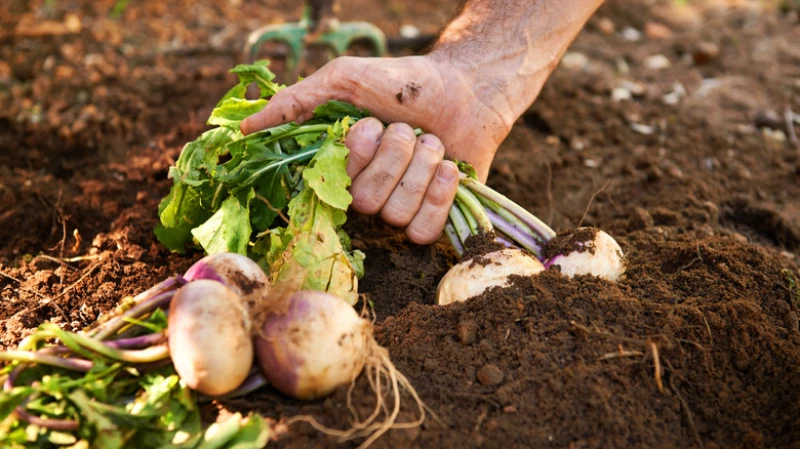Thinking of growing turnips this winter? It's a wise and rewarding choice, but certain key aspects need your attention for a thriving crop. Belonging to the Brassicaceae family, turnips can thrive in less-than-ideal conditions, making them an excellent choice for winter gardening. However, the secret to a successful turnip harvest lies in selecting the right varieties since winter demands hardier maincrop types. The Royal Horticultural Society advises planting the maincrop turnips between July and mid-August because they're known for their adaptability to cooler climates. This period aligns perfectly with their natural growth cycle, promising a robust autumn harvest that can extend into the new year.
Preparing the perfect soil and planting your turnips right
When it comes to planting turnips, one of the first things to consider is the soil. Turnips thrive in well-drained, fertile soil, so it's important to test the pH of your garden's soil. The University of Minnesota Extension recommends aiming for a pH between 6.0 and 7.5. Prior to planting, incorporate compost or aged manure into the soil to enhance nutrient levels. When sowing turnips in the ground, proper spacing is crucial. Plant your turnip seeds in rows that are one to two inches apart. This spacing allows each plant to have enough room to grow without competing for nutrients and sunlight. Once the seedlings sprout and true leaves appear, thin them out. Although it may seem counterintuitive, this step is essential for ensuring each turnip has enough space to develop properly.
Tackling weeds and ensuring continuous turnip care
Managing weeds is a crucial part of growing turnips. According to experts at the University of Nebraska Lincoln, these root vegetables don't compete well with weeds, especially in their early stages. To start off, consider using a contact herbicide like Gramoxone or Roundup before planting. This pre-emptive strike against weeds gives your turnips a clean slate to grow. But remember, always follow the safety instructions and guidelines when using herbicides. Once your turnips are in the ground, continue to keep an eye on weed growth. Regular hand weeding may be necessary, especially in the early weeks. While it's a bit of manual work, keeping the area around your turnips weed-free is essential for their development. Weeds not only compete for nutrients but also for water and light, which are both critical for your turnips' growth.
Ensuring the well-being of your turnip plants goes beyond just controlling weeds. When it comes to both in-ground and container methods, proper watering is crucial. Turnips thrive in consistently moist soil, so it's important to regularly water your plants, especially during dry periods. However, be cautious not to overwater, as this can lead to root rot and other diseases. The goal is to keep the soil moist but not waterlogged, which will promote healthy growth. Additionally, as your turnips mature, be on the lookout for pests and diseases. Common problems include maggots and aphids. To prevent these issues from recurring, it's a good idea to rotate your crops each year.









